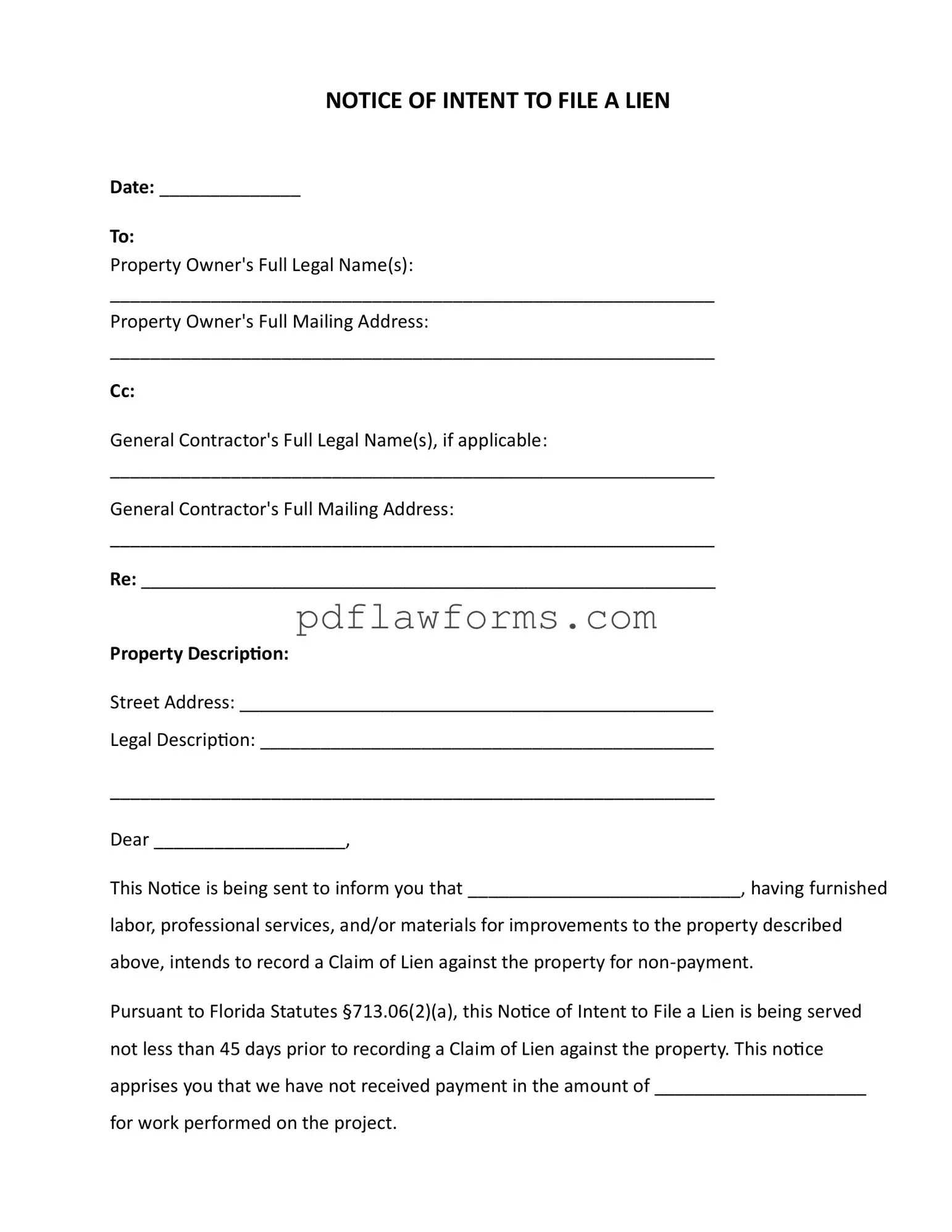The Intent To Lien Florida form serves as a crucial tool for contractors, suppliers, and service providers in the construction industry who need to protect their rights when it comes to payment for services rendered. This formal notice is sent to property owners when there has been a failure to receive payment for labor, materials, or professional services provided for improvements on a property. By issuing this notice, the sender notifies the property owner of their intention to file a Claim of Lien, which can lead to serious consequences, including foreclosure proceedings. The form includes essential details such as the date, the names and addresses of the property owner and general contractor, a description of the property, and the amount owed. It also outlines the legal framework under Florida Statutes §713.06, emphasizing the importance of timely payment and the potential repercussions of inaction. The sender expresses a preference for resolving the matter amicably, encouraging the property owner to respond promptly to avoid further legal actions. Understanding the implications of this notice is vital for both property owners and those in the construction industry, as it helps maintain clear communication and prevents misunderstandings regarding payment obligations.
